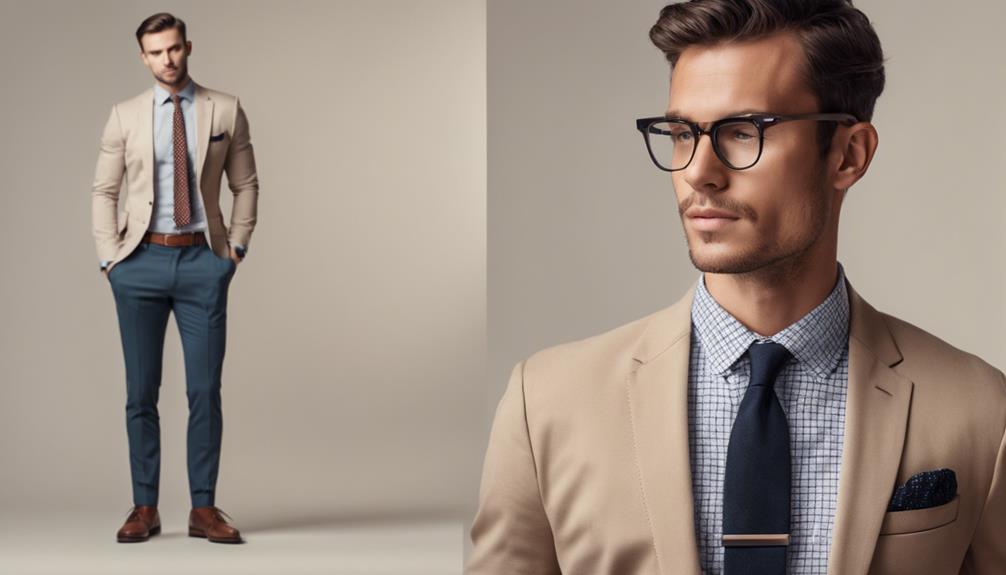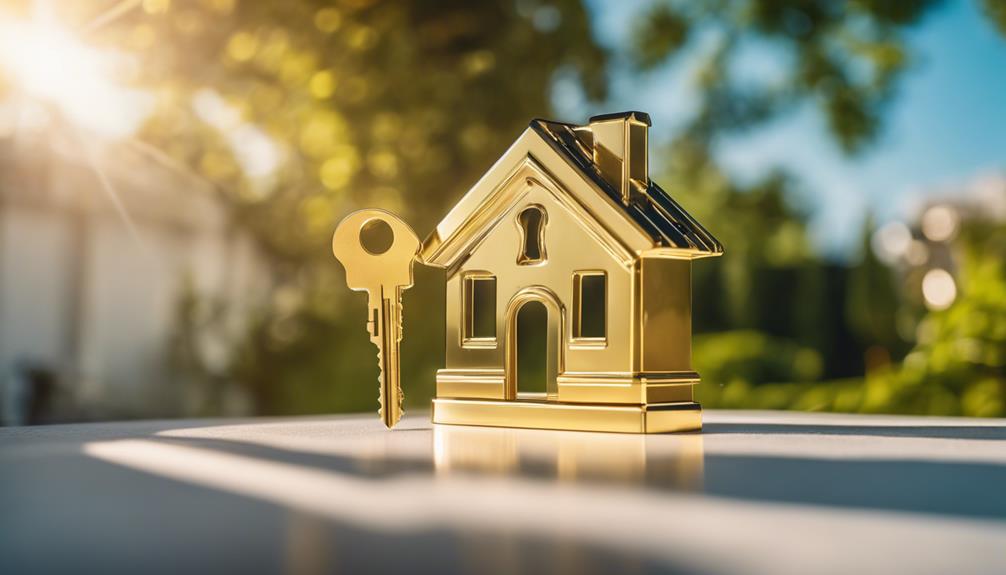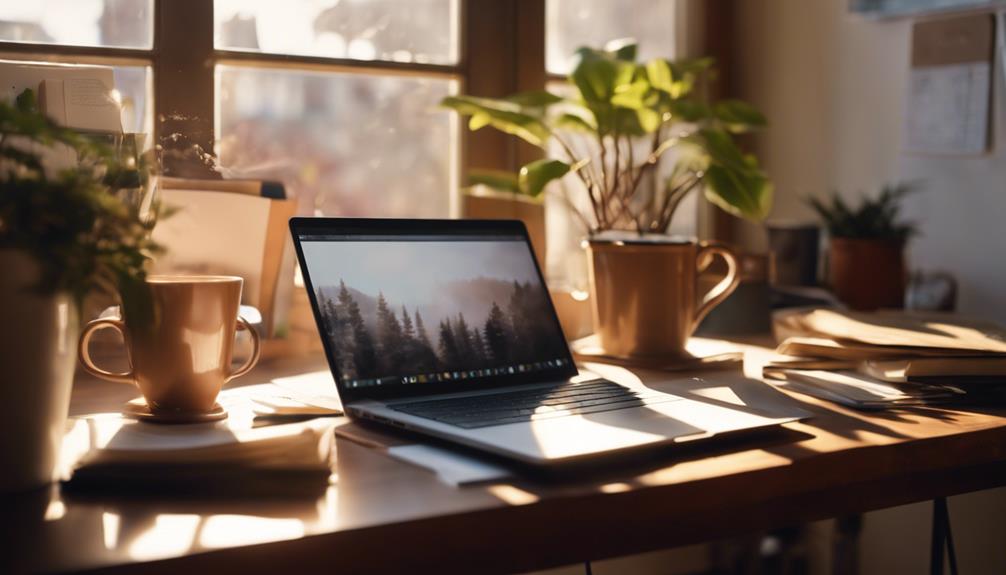To dress right, it's essential to understand the difference between business casual and smart casual. Business casual means combining comfort with professionalism, so opt for tailored pants and collared shirts. Clean, dressy jeans can work too, but pair them with loafers—no sneakers. Smart casual leans more toward style; think tailored blazers and chic accessories. Quality fabrics elevate your look, and stylish loafers or ankle boots are a must. Remember, both styles require you to look polished without being overly formal. If you're keen to enhance your wardrobe choices, there's plenty more to discover about proper dress codes.
Key Takeaways
- Business casual emphasizes professionalism with items like dress pants and collared shirts, while smart casual combines style and comfort with tailored pieces.
- Clean, dressy jeans can be acceptable in business casual when paired with appropriate tops, whereas smart casual often incorporates chic accessories for a polished look.
- Footwear for business casual should include loafers or dress shoes, while smart casual allows for stylish loafers or ankle boots.
- Understanding the context and occasion is crucial; business casual suits workplace environments, while smart casual is more versatile for social settings.
Understanding Dress Codes
Understanding dress codes is vital because they set the tone for professionalism and appropriateness in various contexts.
Knowing the differences between casual, business casual, and formal attire can greatly impact how others perceive you. Dress codes vary widely, from relaxed environments to formal events, each requiring specific attire.
Misunderstanding these guidelines can lead to confusion, especially between business casual and smart casual. It's important to be aware of the expectations for different occasions.
An infographic can be a helpful visual guide, making it easier to grasp these distinctions.
Ultimately, understanding dress codes not only helps you make a positive impression but also shows respect for the setting and those around you.
Defining Casual Attire
Casual attire typically includes comfortable pieces like T-shirts and jeans, as long as they're clean and well-fitted. You can still look put-together without sacrificing comfort.
Here are some key aspects of casual wear to keep in mind:
- Fit Matters: Avoid baggy or overly tight clothing. Well-fitted pieces make a world of difference.
- Stay Clean: Always opt for fresh, wrinkle-free clothes. Nobody wants to see you in worn-out items.
- Accessorize Smartly: A simple accessory can elevate your casual look without overdoing it.
- Dress for the Occasion: Know what's appropriate for the setting—casual doesn't mean careless.
Business Casual Essentials
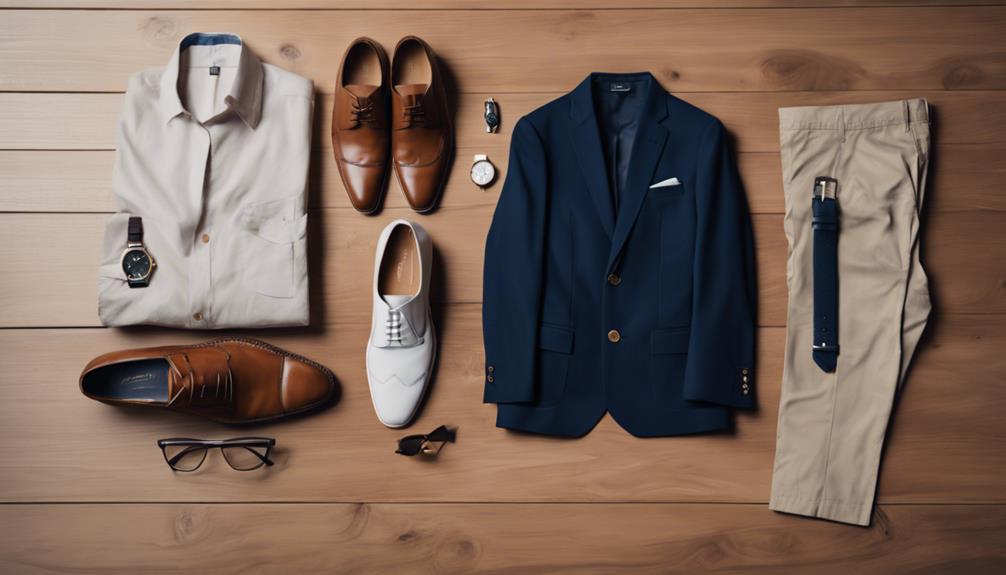
Business casual attire strikes a balance between professionalism and comfort, making it essential for many workplace environments.
To nail this look, focus on key essentials. Start with dress pants or tailored chinos, avoiding overly casual options like sweatpants. Pair them with a collared shirt, whether it's a button-down or a smart polo. Nice jeans can work too, but guarantee they're clean and paired with a dressy top.
Footwear matters; opt for loafers or dress shoes instead of sneakers. Accessories should be minimal but polished, like a belt that matches your shoes.
Characteristics of Smart Casual
Smart casual combines stylish elements with comfort, allowing you to express your personality while maintaining a polished appearance. This dress code is all about balance and versatility.
Here are some key characteristics to keep in mind:
- Tailored Pieces: Incorporate well-fitted blazers or trousers to elevate your look.
- Chic Accessories: Use statement jewelry or a stylish watch to add flair.
- Quality Fabrics: Opt for materials like cotton, wool, or silk that feel luxurious yet comfortable.
- Smart Footwear: Choose stylish loafers or ankle boots that complement your outfit without sacrificing comfort.
Embracing smart casual means you can showcase your unique style while remaining appropriate for various settings.
Exploring Other Dress Codes
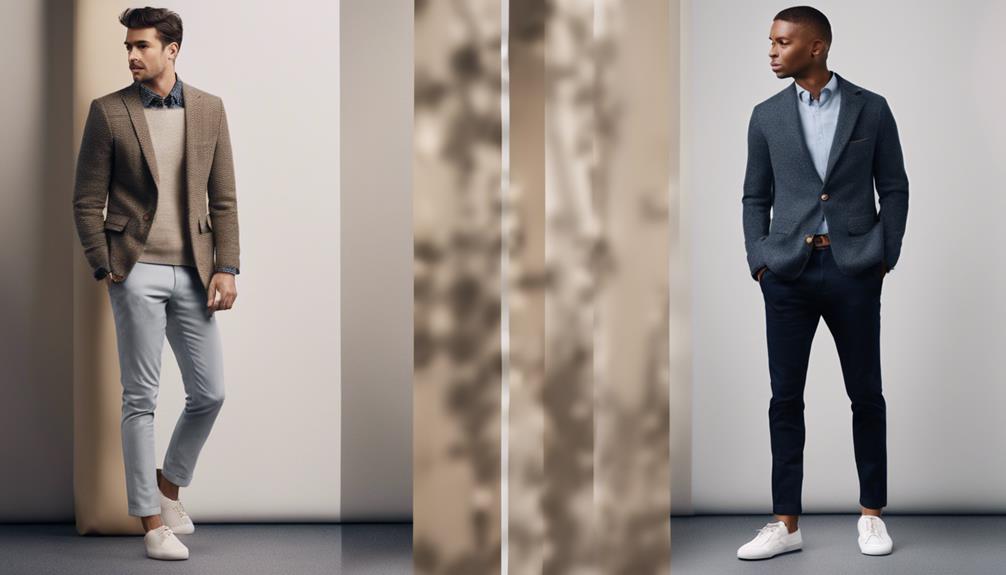
Understanding the nuances of various dress codes can help you choose the right outfit for any occasion.
Beyond business casual and smart casual, you'll encounter several other dress codes.
For instance, business formal typically requires a suit and tie for men, or a tailored suit for women, ensuring a polished appearance.
Semi-formal attire is less strict but still requires you to look put together, often involving dresses or dress pants paired with nice tops.
When it comes to black tie, think tuxedos or elegant gowns for evening events.
Always check the specific event requirements, and don't hesitate to consult well-dressed peers for advice.
Knowing these dress codes can enhance your confidence and make a lasting impression.
Frequently Asked Questions
Can I Wear Sneakers With Business Casual Attire?
You can wear sneakers with business casual attire, but choose clean, stylish pairs that complement your outfit. Avoid overly casual or athletic styles to maintain a polished appearance while staying comfortable and confident.
How Do I Accessorize for Smart Casual Outfits?
To accessorize smart casual outfits, choose polished pieces like a stylish watch or statement necklace. Opt for a chic belt or tailored bag to enhance your look, ensuring everything complements your overall attire seamlessly.
What Colors Are Best for Business Casual Attire?
For business casual attire, opt for muted colors like navy or gray for professionalism, while splashes of brighter shades like burgundy or teal add personality. You're balancing formality and flair, so choose wisely to impress.
Are Leggings Acceptable in Smart Casual Settings?
Leggings can be acceptable in smart casual settings if styled appropriately. Pair them with a chic top and tailored blazer, ensuring the overall look remains polished and sophisticated to meet the occasion's standards.
How to Transition From Business Casual to Smart Casual After Work?
To shift from business casual to smart casual after work, swap your collared shirt for a stylish top, add tailored jeans, and choose polished footwear. Accessorize thoughtfully to maintain a chic yet comfortable vibe.
Conclusion
In the tapestry of professional attire, knowing the threads of business casual and smart casual can weave a stunning impression.
By grasping their nuances, you'll not only dress appropriately but also showcase your unique style.
Whether you're stepping into a high-stakes meeting or mingling at a networking event, your clothing choice can be the brushstroke that completes your masterpiece.
So, next time you face your wardrobe, remember: the right outfit can open doors you never knew existed.
